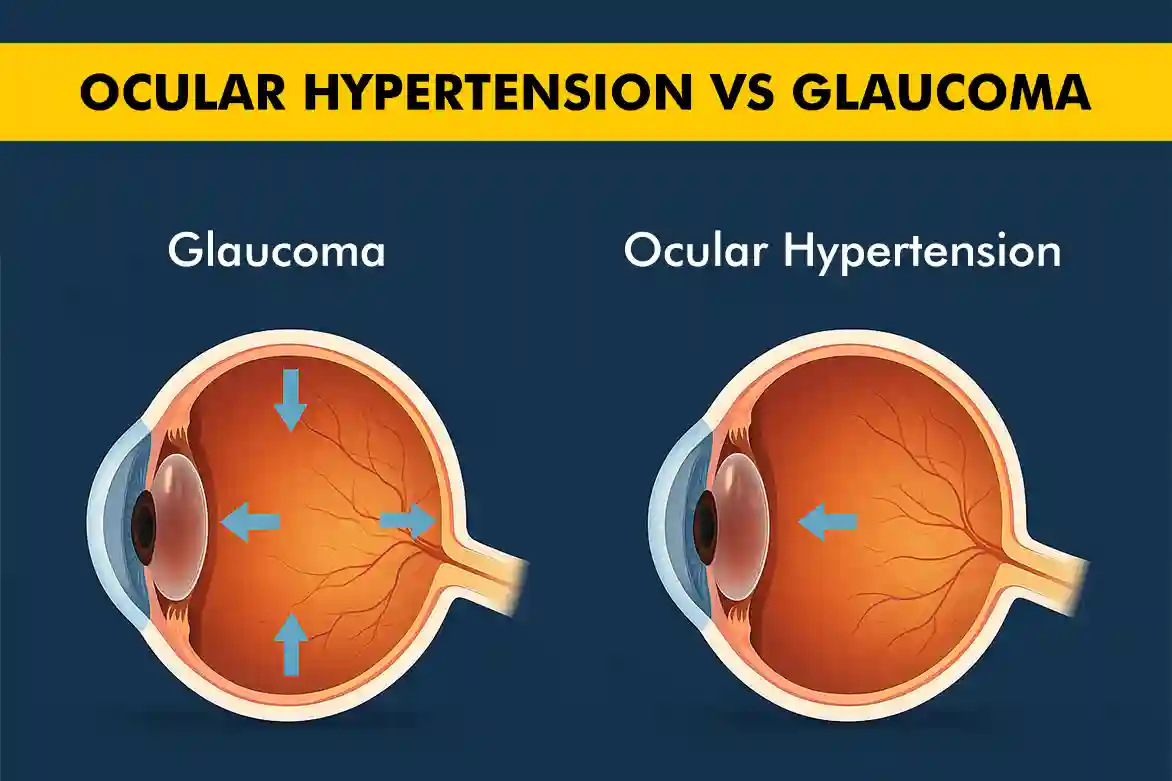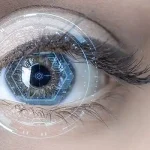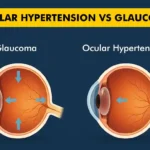Maintaining good eye health is crucial for overall well-being, yet many people are unaware of conditions that can seriously impact vision, such as ocular hypertension and glaucoma. While these terms are often used interchangeably, they are distinct conditions with different implications for eye health.
In this blog post, we will explore the key differences between ocular hypertension and glaucoma, their risk factors, symptoms, and management options to help you make informed decisions about your eye care.
Eye Pressure and Its Impact
Intraocular pressure (IOP) refers to the fluid pressure inside the eye. Maintaining a normal IOP is essential for the health of the eye, as it helps preserve the shape of the eye and ensures proper functioning of the optic nerve. Elevated or high eye pressure can damage the optic nerve, leading to vision loss, and if left unchecked, can result in irreversible blindness. Both ocular hypertension and glaucoma involve high IOP, but the impact on eye health and the risk of vision loss differ significantly between the two conditions. Regular monitoring of IOP is crucial, as early detection of elevated pressure can prevent severe vision problems and maintain overall eye health.
What Is Ocular Hypertension?
Ocular hypertension is defined by an intraocular pressure that surpasses normal levels without causing any visible damage to the optic nerve or resulting in vision loss. While there are no distinct types of ocular hypertension like there are with glaucoma, the condition itself requires vigilant monitoring due to its potential to increase the risk of developing glaucoma in the future. People with ocular hypertension typically do not show any noticeable symptoms, highlighting the necessity of regular eye examinations. These exams are essential for the early detection and effective management of the condition.
What Is Glaucoma?
Glaucoma is an eye disorder that damages the optic nerve, primarily due to elevated intraocular pressure (IOP). This damage is significant because it can lead to permanent vision loss, making glaucoma one of the top causes of blindness globally. The condition is categorized into several types, each with unique characteristics and treatment strategies. Open-angle glaucoma is the most common form, where the drainage angle for eye fluid remains open, but the trabecular meshwork is partially blocked, leading to gradual pressure buildup. Angle-closure glaucoma occurs when the iris bulges forward, narrowing or blocking the drainage angle, which can cause a sudden increase in eye pressure. Normal-tension glaucoma, on the other hand, involves optic nerve damage despite normal IOP levels, suggesting that factors other than pressure may contribute to nerve damage. Each type of glaucoma has distinct risk factors and requires tailored treatment approaches to manage the condition effectively.
Key Differences Between Ocular Hypertension and Glaucoma
| Aspect | Ocular Hypertension | Glaucoma |
| Optic Nerve Damage | No damage to the optic nerve is present. | Optic nerve damage is evident. |
| Risk of Progression | Can increase the risk of developing glaucoma over time. | Directly leads to vision loss if untreated. |
| Symptoms | Typically asymptomatic, no noticeable symptoms. | Symptoms may include vision loss, eye pain, and halos. |
| Types | No distinct types. | Includes open-angle, angle-closure, and normal-tension. |
| Treatment Approach | Focuses on monitoring and lowering IOP with medication. | May involve medication, laser therapy, or surgery. |
| Monitoring Necessity | Regular monitoring is crucial to prevent progression. | Requires ongoing management to prevent further damage. |
Risk Factors and Symptoms to Watch For
Risk Factors for Ocular Hypertension and Glaucoma:
- Age: The risk increases as you get older.
- Family History: A family history of glaucoma or ocular hypertension can elevate your risk.
- Ethnicity: Certain ethnic groups, such as African Americans and Hispanics, are at higher risk.
- Medical Conditions: Conditions like diabetes, hypertension, and heart disease can contribute to higher risk.
- Eye Conditions: Previous eye injuries or surgeries can increase susceptibility.
- Use of Steroids: Long-term use of corticosteroid medications can raise intraocular pressure.
Symptoms of Ocular Hypertension:
- Typically asymptomatic, meaning there are no noticeable symptoms.
Symptoms of Glaucoma:
- May be silent/asymptomatic in many cases.
- Vision loss, often starts with peripheral vision.
- Eye pain or discomfort.
- Seeing halos around lights.
- Redness in the eye.
- Nausea or vomiting (in acute cases).
Being aware of these risk factors and symptoms is crucial for early detection and effective management of these conditions.
The Importance of Early Detection and Regular Eye Exams
Early detection through regular eye exams plays a vital role in preventing vision loss associated with both ocular hypertension and glaucoma. During these exams, an eye care professional will measure the intraocular pressure (IOP) to ensure it remains within a normal range. They will also conduct a thorough examination of the optic nerve to check for any signs of damage or abnormalities that could indicate the onset of glaucoma. This proactive approach is especially crucial for individuals who are at a higher risk of developing these conditions. Those with a family history of glaucoma, certain ethnic backgrounds, or other risk factors should prioritize regular eye exams. By doing so, they can catch any potential issues early on, allowing for timely intervention and management to protect their vision and overall eye health.
Treatment and Management Options
Treatment for ocular hypertension primarily focuses on reducing intraocular pressure (IOP) to prevent potential damage to the optic nerve. This is typically achieved through the use of medications such as eye drops that help lower IOP. Regular monitoring by an eye care professional is essential to track any changes in eye pressure and adjust treatment as needed. Additionally, lifestyle modifications, including engaging in regular physical activity and maintaining a balanced diet, can contribute to managing eye pressure effectively.
For glaucoma, the treatment approach is more comprehensive due to the risk of optic nerve damage and vision loss. Medications, often in the form of eye drops, are commonly prescribed to decrease IOP. In some cases, laser therapy may be recommended to improve fluid drainage from the eye, thereby reducing pressure. Surgical options are also available for more advanced cases, where procedures are performed to create new drainage pathways or enhance existing ones. Early intervention is crucial in glaucoma management to preserve vision and prevent further deterioration. Regular follow-ups with an eye specialist are vital to ensure the effectiveness of the treatment plan and make necessary adjustments.
Conclusion
Understanding the differences between ocular hypertension and glaucoma is essential for protecting your vision. While ocular hypertension can increase the risk of developing glaucoma, early detection and proactive management can prevent significant vision loss.
Regular eye exams and consultations with an eye care professional are vital in maintaining eye health and addressing any concerns related to eye pressure.
FAQs
Not everyone with ocular hypertension will develop glaucoma.
High eye pressure without optic nerve damage is often treated with medications to lower IOP, along with regular monitoring.
Early warning signs of glaucoma include vision loss, eye pain, and seeing halos around lights. Many times there are no symptoms and diagnostic tests such as OCT & visual field (perimetry) are needed to diagnose/assess the disease.
If you have high eye pressure, it is recommended to get an eye exam at least once a year.
While glaucoma cannot be prevented, early detection and treatment can significantly slow its progression and protect your vision.





